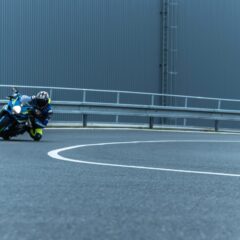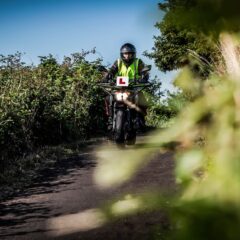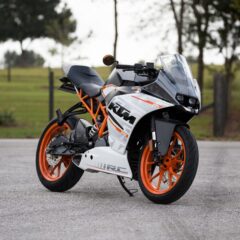
7 Top Motorcycle Accessories
With Christmas just around the corner, you might be wondering what to get your favourite motorcycle enthusiast or even a little something for yoursel...
 Phoenix Motorcycle Training LTD
Phoenix Motorcycle Training LTD
 Phoenix Motorcycle Training LTD
Phoenix Motorcycle Training LTD

Instinct kicks in when you’re in danger and it’s evolved over millennia to keep you safe. The trouble is, we didn’t evolve with motorcycles. So your instinctive reactions can put you in danger if you’re riding. The solution is a better motorcycle riding technique. Because your rider technique will save you when instinct can’t.
Not all of your natural instincts will get you into trouble when your ride. But those that do, can have their impact reduced by developing better motorcycle riding techniques. Doing this creates stronger neural pathways for these behaviours. Eventually, they become automatic behaviours that replace faulty instincts. But it takes conscious practice, vigilance and an understanding of what better motorcycle riding actually is.
According to neuroscience, there are seven groups of ancient instincts we all share. These are seeking, anger, fear, panic/grief, care, pleasure/lust and play. It’s the instincts in the anger, fear and panic categories that are most troublesome for motorcyclists. These faulty instincts are often the cause of many motorcycle accidents.
It makes sense that we’ve developed a reaction to fear that causes us to put space between ourselves and the object that’s frightening us. This manifests physically as straightening our arms and back. You’ve probably seen small kids do it when they see something that scares them. You may have noticed yourself doing it when things get hairy or you’re faced with something alarming. Don’t worry, it’s common for all humans to react like this.
When you’re riding a motorcycle, this posture is the exact opposite of what you need for safe riding and steering. You need to keep your arms loose, low and horizontal. Your shoulders should be low too.
When we’re scared or see a threat, our natural reaction is to stare at the danger. This lets us focus our energy and prepare for the impact. The trouble with this instinct when you’re riding a motorcycle, is where you look is where you’ll aim your bike. That almost guarantees a collision.
Instead, riders need to be aware of the threat, maybe a car that has blocked their way, and look for ways around them. It can be mere seconds, but those few seconds can be the difference between hitting obstacles and cruising past them.
When we’re worried about our grip on a surface, particularly when moving through a curve, we naturally want to slow down. It’s not uncommon for riders to quickly relax on their throttle in the middle of a curve for this reason.
This reaction is almost like hitting your brakes in a turn. It can cause a motorcycle to slide and it transfers weight to the front wheel making it harder to turn.
All of these natural reactions have developed to keep you safe. The trouble is, they’re not in harmony with the physics of motorcycle riding.
There is nothing wrong with your instincts. They will protect you in the situations your body has evolved to manage. That’s walking, running, climbing and dealing with situations on your own two feet. But when two wheels are involved, riding technique will serve you better.
There are three ways to develop this…
All riders get scared at times when riding. It doesn’t matter how long you’ve been a motorcyclist for, or even if you’ve developed enough skill to instruct new riders. New situations will present themselves. Fear will naturally arise and, unless you have developed better motorcycle riding techniques into a habit, your instincts will be triggered.
Motorcycle riding can be safe when you’ve developed your rider techniques into habits. These habits can override your natural tendencies and keep you safe on the road. Better motorcycle riding technique puts you in control and allows you to work in harmony with your machine.
Practice makes perfect. Consciously practising embeds those new behaviours faster. Make time to complete drills that help you develop your riding skill. The following exercises will get you started.
This is the most effective way to manoeuvre through a turn. Push sharply on the handlebar on the side matching the direction you’d like to turn. This is often called a ‘steering command’. You’ll need to apply different levels of pressure for different speeds your traveling at and different angles of corners.
The steering command initially moves you in the opposite direction—for a brief moment. The front tyre’s contact point then adjusts with the road outwards from the centre. Your motorcycle quickly moves to the correct lean angle and turns in the direction you’ve chosen. Elegant, isn’t it?
This is the precise point you should give your motorcycle the steering command. Practising this will help you become a better rider and improve your countersteering technique. Use objects at the side of the road, or marks on tarmac to get a feel for the correct steering point in a number of situations.
Countersteering doesn’t just involve your arms and hands, your feet should be part of it too. Consciously feel the outward footpeg on the opposite side of your bike to where you plan to push for countersteering. Contract your leg muscles and transfer the force to your opposite handlebar to complete an anchored push.
At higher speeds, you need to create a lot of energy and oomph to cause the necessary effect of countersteering. Practising at low speeds with less energy is a good place to begin.
Immediately after giving a steering command, you need to open your throttle a little. This transfers weight from the front tyre to the rear making your bike more willing to steer. It also allows your front forks to work better by lifting them slightly and returning them to a medium position.
Cornering demands steady speed and leaning. Good anchoring provides a steady lean. Conscious throttle control is the other half of the equation. Combined, they create better road grip, stability and satisfaction — you’ll know when you’ve done it well.
Your footpegs, saddle and fuel tank are your primary anchoring points on a motorcycle. Remembering these allows you to keep your upper body relaxed and low; the optimal rider position. Being conscious of your anchoring points also helps you give your motorcycles more precise commands. It’s also behind a better motorcycle riding technique.
Being in total control of your motorcycle and your reactions is immensely satisfying. It’s one of the things that makes motorcycle riding fun. Practising the above exercises, consciously, will develop your skill. That makes you a safer rider and increases the joy of riding.

With Christmas just around the corner, you might be wondering what to get your favourite motorcycle enthusiast or even a little something for yoursel...

If you love motorcycle riding, you’ve probably daydreamed about riding a motorbike for a living. A professional racer or stunt rider is OK for some...

Getting a UK motorcycle licence can seem a complicated process. Particularly when compared to a driving licence for a car. Whether you choose the pro...
This website uses cookies to personalise content, ads, and analyse traffic, sharing data with partners who may combine it with other information. See our Privacy Policy for more information.